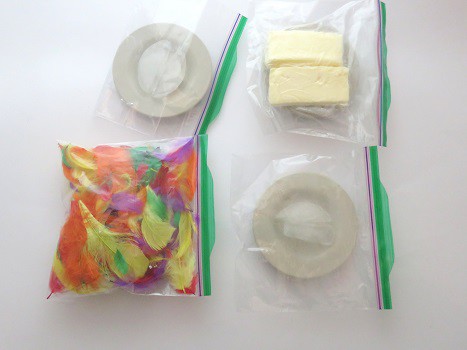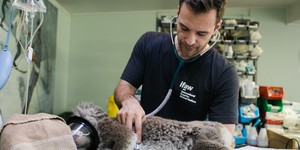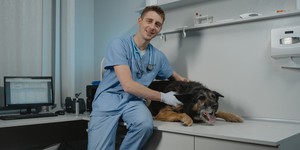Summary

Introduction
How lovely it is to come home after a chilly winter walk to a cozy house, put on your fluffy slippers, and settle by the fireplace with a warming cup of hot chocolate. Animals like the polar bear, the Arctic wolf, or Antarctic penguins are not so lucky to have such a place. How do they face the extreme winter temperatures? Most take on “winter coats” in the fall. Wondering what these coats look like, and how they help keep animals warm? Do this cool activity and you will feel it firsthand!
Background
Warm-blooded creatures like mammals—including humans—use part of the food they eat to keep their body temperatures relatively constant. A lot of energy is needed to regulate your temperature, especially when your environment is way cooler than your body temperature.
Humans use clothes to keep themselves warm on a cold day. Clothes form a thermal barrier between our warm bodies and the cold weather, preventing heat from escaping. Other mammals have developed natural barriers to trap body heat, allowing them to survive in cold climates. It is like they take on several “winter coats,” each of which plays an important part.
The first coat is often a layer of fat hidden under the skin called “blubber.” In addition to being a good thermal insulator—it does not allow heat to pass through it easily—fat has the added benefit of serving as a welcome food reserve. The next coat is often a dense layer of underfur or down feathers packed closely against the skin like a warm undershirt. This cozy, soft coat is filled with air pockets that provide insulation. A stationary layer of air is another good thermal insulator. Finally, to keep out moisture, there is often a layer of oily, water-repellent guard hairs or feathers. Sometimes these hairs appear white, but they are often transparent and hollow, which has a big advantage: they provide extra thermal insulation.
Some arctic animals, like polar bears, are so well-insulated that they cannot be spotted with night vision goggles, which pick up radiated heat. This implies that their outer layer of fur has the same temperature as their surroundings. In other words, these animals can keep all of their heat inside, losing none to the environment. How amazing!
Ready to feel the insulating capacities of these materials? Gather a few items and try it out!
Materials
- Four zipper-lock sandwich bags
- Four small plates filled with ice cubes
- Small feathers (craft feathers are fine)
- Quarter pound of butter (one stick) at room temperature
Preparation
- Fill one sandwich bag with a layer of feathers about two centimeters thick and close the bag.
- Fill another sandwich bag with a two centimeter-thick layer of butter and close the bag. If the butter was not at room temperature, leave the bag and butter out for a while before you perform the test.
- Trap air into a third sandwich bag. Try to make it as thick as the other bags. We found that closing the bag a little over halfway first, then blowing into it and closing the remainder worked well. As the air you trap this way is warmer than room temperature, it is best to leave the bag out for a while to adjust.
- Leave a fourth sandwich bag empty.
- Place a layer of ice cubes on four small plates.
- Place one bag on top of the ice cubes on each plate.
 Image Credit: Science Buddies
Image Credit: Science Buddies
Instructions
- Let one hand rest on the empty bag, the other on the feathered bag. Avoid pressing down on the bags. Which one feels colder?
- Remove your hands and wait a moment until both hands feel warm again. Now, place one hand on the empty bag and the other on the bag filled with fat. Which one feels colder now, the empty bag or the bag with a layer of fat?
- Before you go on, which one do you expect to feel colder, the empty bag, the bag with air, or would they both feel as cold?
- Feel which one feels colder. Was your prediction correct?
- In a moment, you will compare the layer of feathers, the layer of fat and the layer of air. Which one do you think will feel warmest and which one will feel coldest? The one that feels warmest creates the best thermal barrier and thus, is the best thermal insulator. Scientists call materials that prevent heat transfer “thermal insulators.”
- Perform the test. Make sure to let your hands adjust to room temperature before comparing. Were you able to tell which one felt warmer, or is the difference too small to detect?
- For a more detailed test, leave the bags on the ice cubes for 15 minutes and feel again. Are you able to detect the difference now?
- Do your predictions and your test results agree?
Extra: Do you think that adding several layers will create a bigger thermal barrier? To test this, you first must let your bags warm up again. Take them off the ice and leave them at room temperature for a while. Then, place a stack of two bags on ice cubes and measure how long it takes before the top feels cold. Does it take longer than the single layers?
Extra: Try some other materials, like wool (from yarn), cotton, leather, fleece, paper, or aluminum foil. Which ones do you expect to be good insulators? Do your test results agree with your predictions?
Extra: Now that you know some good thermal insulators, could you design a survival suit for a scientist working in the Arctic, or a mountain climber exploring Mount Everest? Once you are done with your design, look up what people living or working in extreme cold conditions wear. Is your design similar or very different? Why do you think they chose these outfits?
Observations and Results
The empty bag probably felt a lot cooler than the filled bags. This is to be expected. The materials in the bags are good thermal insulators, as they do not let heat travel through them easily. Stacking two bags on top of each other creates an even bigger barrier, so it probably took longer before the top bag felt cold.
The bag with butter (a fat) probably felt colder than the bag with air or feathers, leading to the conclusion that heat transfers faster trough fat than through an equally thick layer of stationary air. Feathers insulate because they trap air, so there was probably little difference between how the bag of feathers and the bag of air felt.
People in the Arctic use animal skin and fur as well as synthetic clothes to protect themselves from the cold. Synthetic clothes made to withstand extreme weather use the same heat trapping techniques as the ones found in animals. For example, they might use down feathers to trap air, or have a water-resistant coating to keep out moisture.
Ask an Expert
Additional Resources
- Cool Facts about Heat, from the Ohio State University
- How Animals Stay Warm with Blubber, from Scientific American
- New Research Reveals How Polar Bears Stay Warm, from Inside Science








